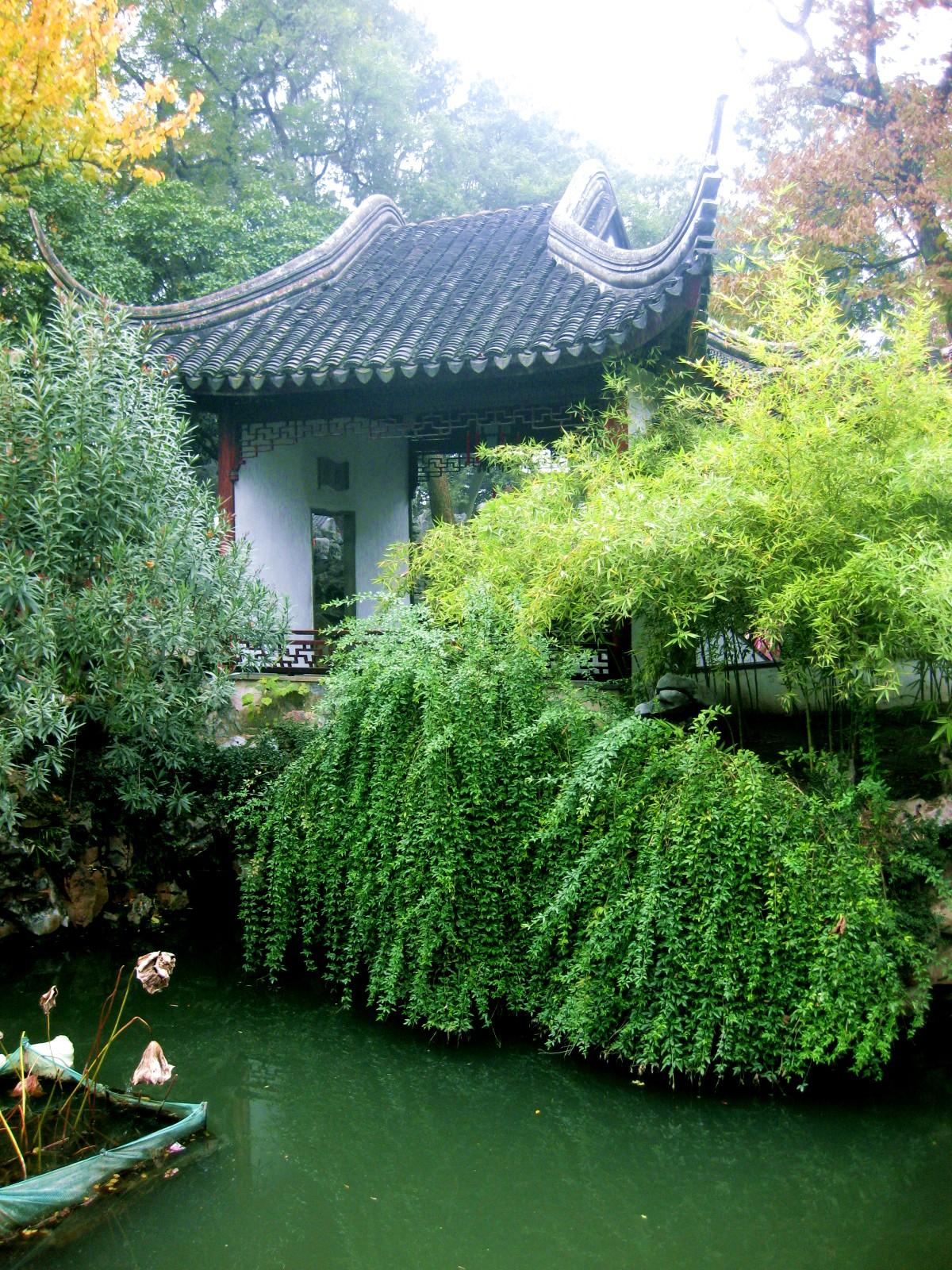
Lion Grove Garden
Lion Grove Garden, together with Humble Administrator's Garden, Lingering Garden and Canglang Pavilion, is known as one of the "Four Famous Gardens in Suzhou". Although Lion Grove Garden is small, its rockery group is very famous. These strange rocks resemble a group of dancing lions, and the rockeries are connected like a maze. You can count the stone lions and explore the rock maze to experience the fun of hide - and - seek.
In the center of the garden are a pond and rockeries. There are famous strange rock peaks such as Lion Peak, Hancui Peak and Tuyue Peak. There are also buildings like Zhenqu Pavilion, Xiuzhu Pavilion and Jianshan Tower surrounding the pond. Climbing up Jianshan Tower, you can have a panoramic view of the garden's landscape.
There is a Wenmei Pavilion on the earthen hill in the western part of the garden. The tables, chairs, ceiling and window patterns inside the pavilion are all in the shape of plum blossoms. Plum trees are planted in front of the pavilion, and they are in full bloom every February. There is also a corridor around the garden. In the walls of the corridor, there are calligraphy steles of the four well - known masters of the Song Dynasty, namely Su Shi, Mi Fu, Huang Tingjian and Cai Xiang, as well as the stele of "Plum Blossom Poems" by Wen Tianxiang of the Southern Song Dynasty.
Lion Grove Garden was first built in the Yuan Dynasty and was originally the back garden of a Chan Buddhist temple. Later, it was bought as a private residence. This garden was deeply loved by Emperor Qianlong of the Qing Dynasty. He must visit this place every time he made a southern tour six times. He also once said that there were a total of five hundred stone lions in the rockery group. There are still plaques such as "Zhenqu" bestowed by Emperor Qianlong in the garden. He even had replicas of Lion Grove Garden built in the Old Summer Palace and the Mountain Resort in Chengde.
Lion Grove Garden, together with Humble Administrator's Garden, Lingering Garden and Canglang Pavilion, is known as one of the "Four Famous Gardens in Suzhou". Although Lion Grove Garden is small, its rockery group is very famous. These strange rocks resemble a group of dancing lions, and the rockeries are connected like a maze. You can count the stone lions and explore the rock maze to experience the fun of hide - and - seek.
In the center of the garden are a pond and rockeries. There are famous strange rock peaks such as Lion Peak, Hancui Peak and Tuyue Peak. There are also buildings like Zhenqu Pavilion, Xiuzhu Pavilion and Jianshan Tower surrounding the pond. Climbing up Jianshan Tower, you can have a panoramic view of the garden's landscape.
There is a Wenmei Pavilion on the earthen hill in the western part of the garden. The tables, chairs, ceiling and window patterns inside the pavilion are all in the shape of plum blossoms. Plum trees are planted in front of the pavilion, and they are in full bloom every February. There is also a corridor around the garden. In the walls of the corridor, there are calligraphy steles of the four well - known masters of the Song Dynasty, namely Su Shi, Mi Fu, Huang Tingjian and Cai Xiang, as well as the stele of "Plum Blossom Poems" by Wen Tianxiang of the Southern Song Dynasty.
Lion Grove Garden was first built in the Yuan Dynasty and was originally the back garden of a Chan Buddhist temple. Later, it was bought as a private residence. This garden was deeply loved by Emperor Qianlong of the Qing Dynasty. He must visit this place every time he made a southern tour six times. He also once said that there were a total of five hundred stone lions in the rockery group. There are still plaques such as "Zhenqu" bestowed by Emperor Qianlong in the garden. He even had replicas of Lion Grove Garden built in the Old Summer Palace and the Mountain Resort in Chengde.
Overview
Info
Review